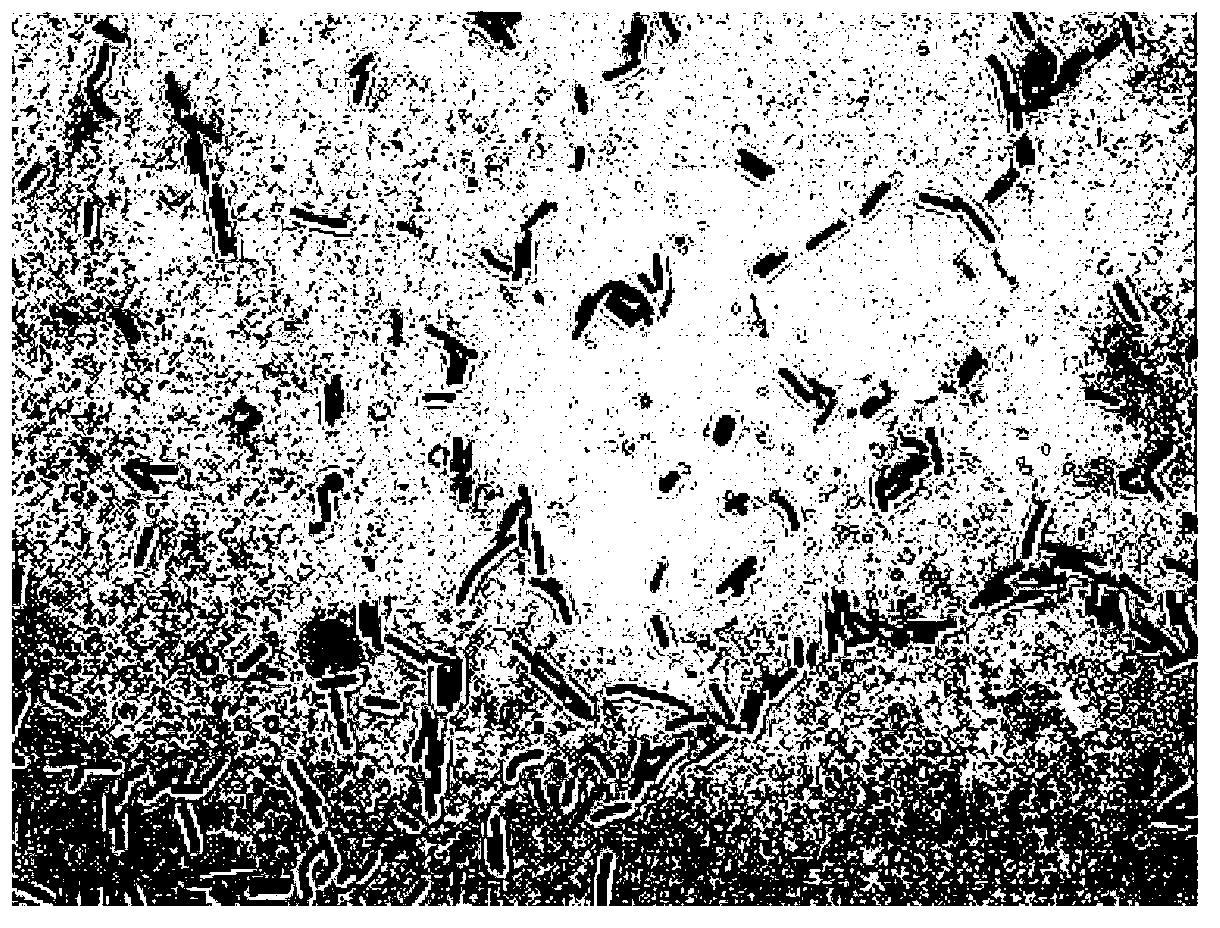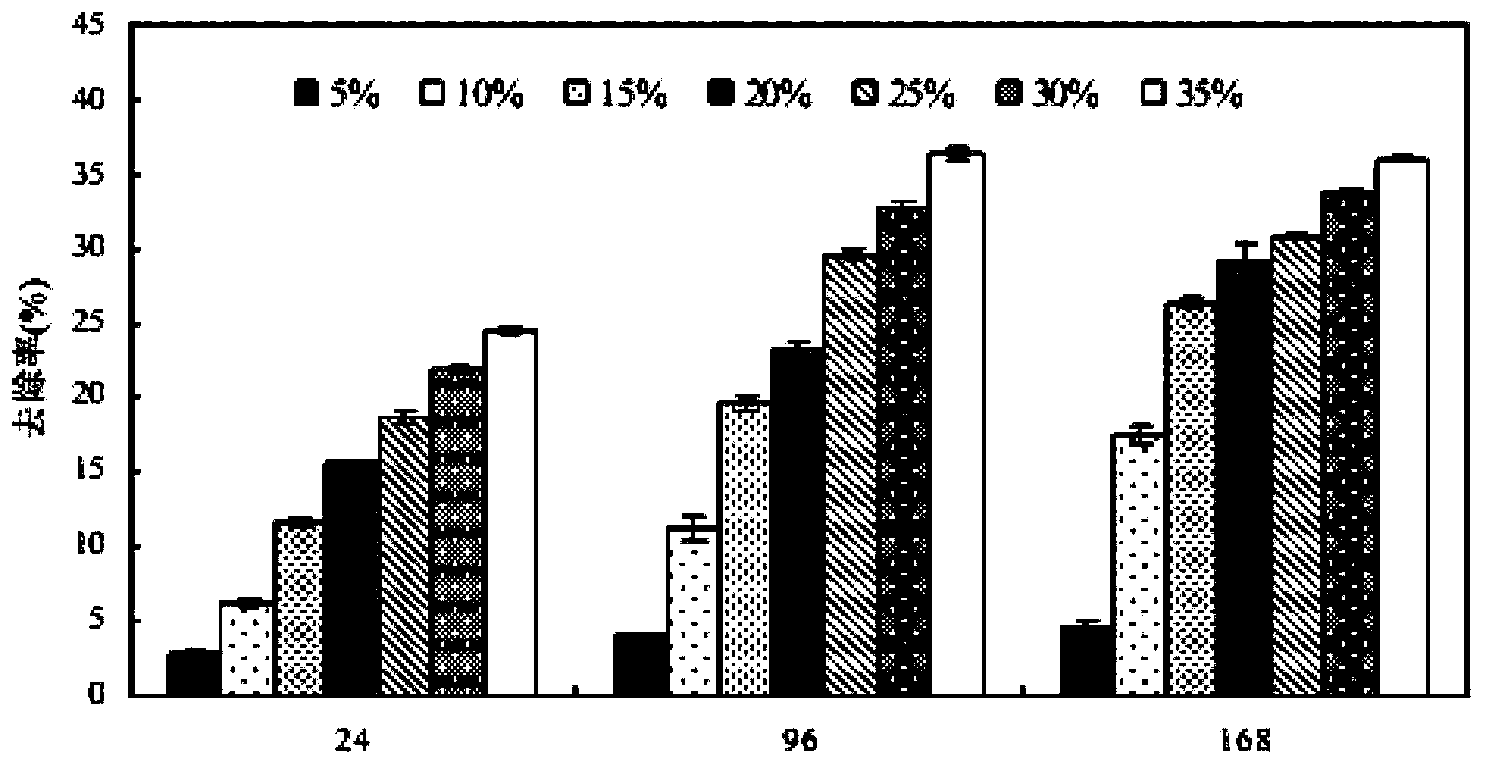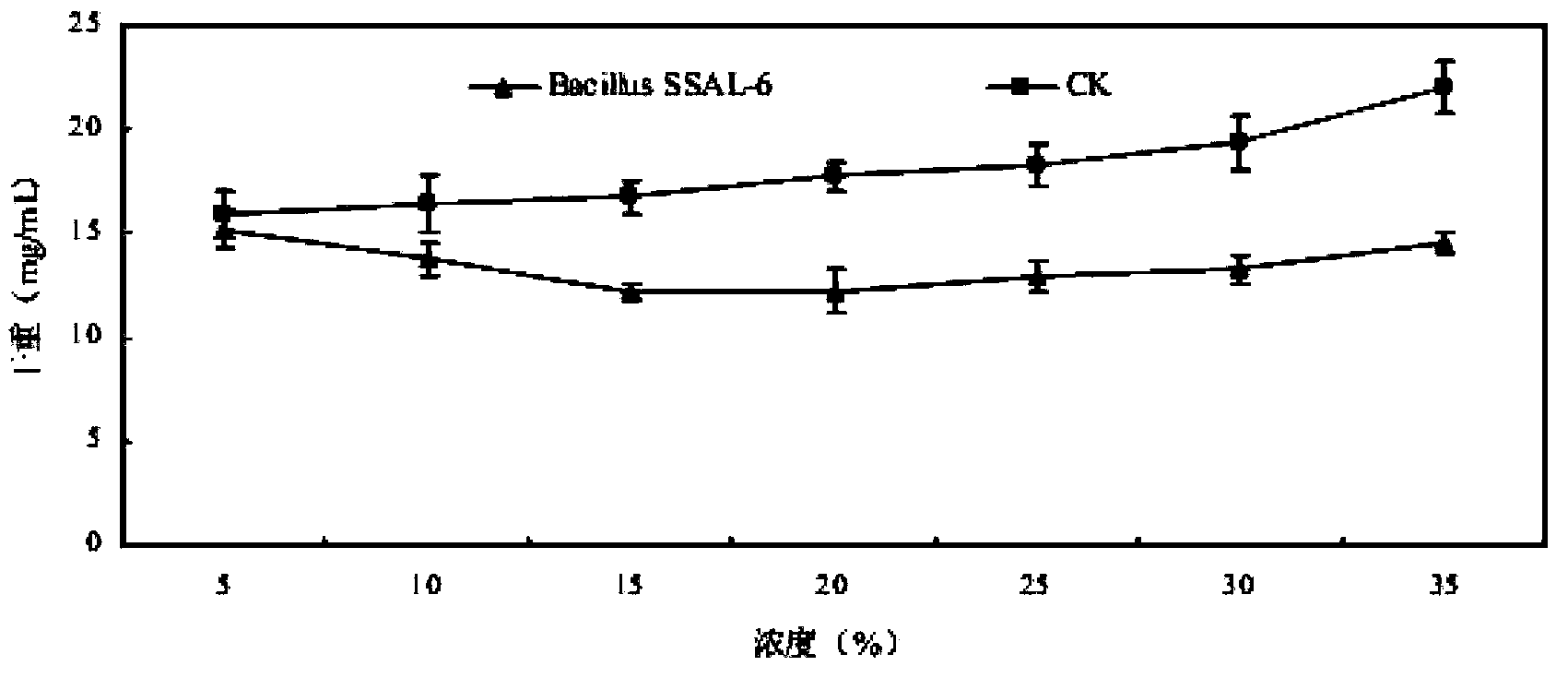Bacillus SSAL-6 and application thereof in degrading anabaena flos-aquae
A technology of blooming Anabaena and Bacillus, applied in the field of microbiology, can solve rare and endangering human problems
- Summary
- Abstract
- Description
- Claims
- Application Information
AI Technical Summary
Problems solved by technology
Method used
Image
Examples
Embodiment 1
[0014] Example 1, Isolation, Purification and Identification of Bacillus SSAL-6
[0015] 1. Isolation and purification of Bacillus SSAL-6
[0016] Using the yellowed Anabaena anabaena liquid from the Key Laboratory of Urban Agriculture (South) of the Ministry of Agriculture as the source of isolation of algae-dissolving bacteria, the smearing plate method and the partitioning method were used to purify and separate the 25 strains of bacteria obtained Place them in 100mL LB liquid medium respectively, the shaker speed is 180r min -1 , cultured at 37°C for 24 hours, and then 800 μL was added dropwise to the solid plate of Anabaena algae blooms, and the algae-dissolving effect of each bacteria was compared through the inspection of the size of the algae-dissolving spot, and finally the strain with a higher algae-dissolving effect was screened out SSAL-6. It was identified as Bacillus and named Bacillus SSAL-6. Put it into the slant medium and store it in the refrigerator at 4°...
Embodiment 2
[0023] Example 2, Bacillus Bacillus SSAL-6 on the growth effect of Anabaena blooms and the influence of photosynthetic pigments
[0024] 1. Effect of Bacillus SSAL-6 on the growth effect of Anabaena blooms
[0025] Anabaena blooms were cultivated with reference to the standard method of algae growth inhibition experiment (Ministry of Environmental Protection), using Shuisheng No. 111 nitrogen-free culture medium, with a pH of 7.5. The culture temperature is 30±2°C, the light is continuously illuminated for 24 hours, the light intensity is 3000±200lx, the culture is static, and it is shaken regularly 3 times a day.
[0026] Anabaena concentration in blooms is 5 x 10 4 ~1×10 5 Bacillus SSAL-6 was added to 100mL of the algae solution (thalline concentration was about 10 9 per mL), the treatment concentration (v / v) gradient was: 5%, 10%, 15%, 20%, 25%, 30% and 35%, and each group of samples was set with 3 replicates. Prepare the same series of different proportions of culture ...
PUM
 Login to View More
Login to View More Abstract
Description
Claims
Application Information
 Login to View More
Login to View More - R&D
- Intellectual Property
- Life Sciences
- Materials
- Tech Scout
- Unparalleled Data Quality
- Higher Quality Content
- 60% Fewer Hallucinations
Browse by: Latest US Patents, China's latest patents, Technical Efficacy Thesaurus, Application Domain, Technology Topic, Popular Technical Reports.
© 2025 PatSnap. All rights reserved.Legal|Privacy policy|Modern Slavery Act Transparency Statement|Sitemap|About US| Contact US: help@patsnap.com



